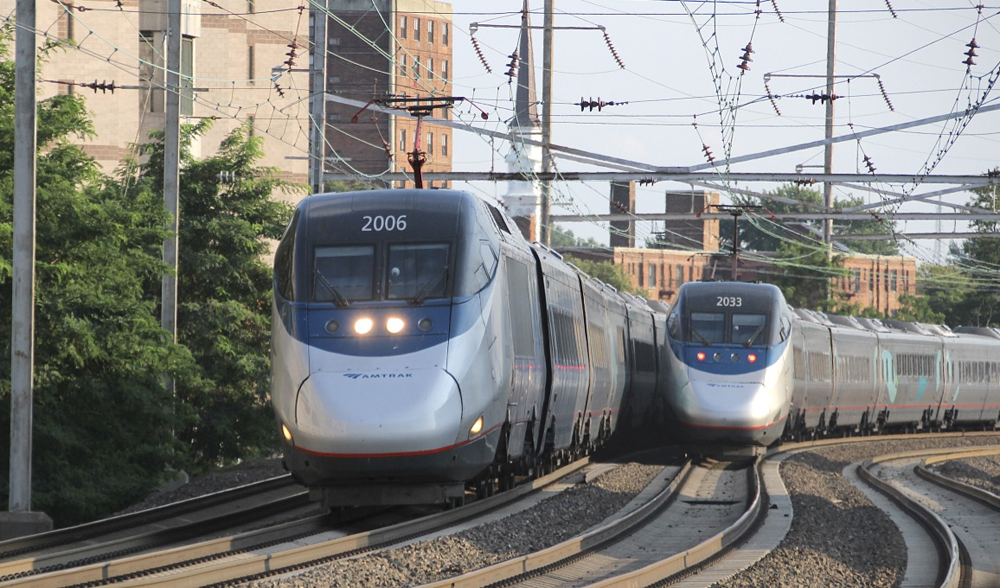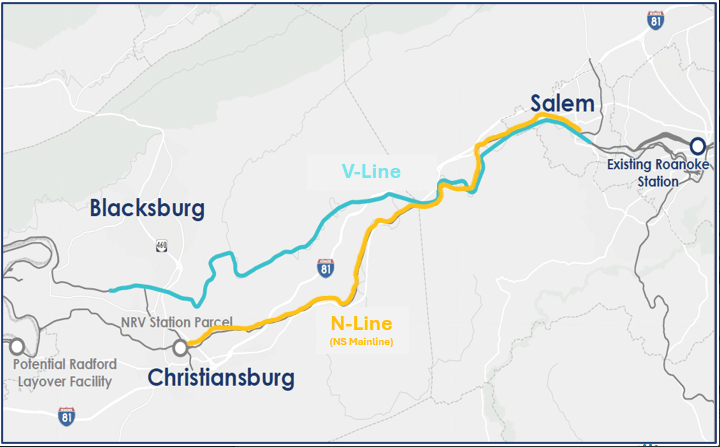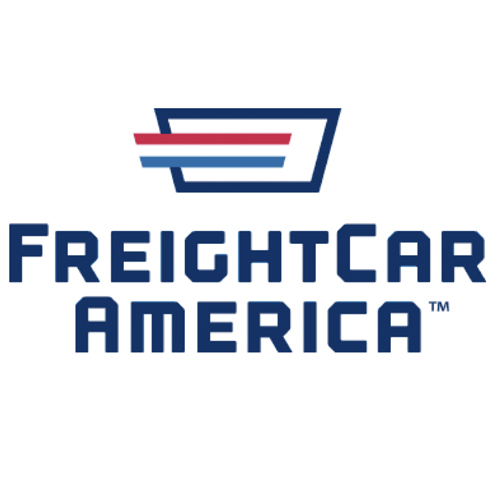
WASHINGTON — More than 28 million passengers rode Amtrak in its 2023 fiscal year, the company today in announcing results for the year that ended Sept. 30.
“Amtrak ridership continues to set post-pandemic records thanks to our customers who were anxious to travel again and attracted to the many benefits of train travel,” CEO Stephen Gardner said in a press release. “This resurgence was made possible by our dedicated employees, our many state and host railroad partners, and ongoing support from the Biden Administration and Congress. We’re inspired by the soaring demand for intercity passenger rail and are eager to continue connecting more people and places.”
The 28.6% million customer trips represent a 24.6% increase over fiscal 2022, the company notes. This includes:
— A 31.3% increase on Northeast Corridor services, with Northeast Regionals up 29.2% and surpassing pre-pandemic levels. Acela ridership increased 38% and edged above pre-pandemic levels by 8% in the fourth quarter, although the total of 2.96 million riders remains more than 600,000 below the total for pre-pandemic fiscal 2019.
— A 22.7% increase in state-supported services, which saw an additional round trip in the Charlotte-Raleigh, N.C., Piedmont corridor; restoration of Amtrak Cascades service to Vancouver, British Columbia, as well as doubling of trips between Portland and Seattle; and — albeit on a limited basis — the return of Adirondack service between New York City and Montreal for the first time since 2020. State services including the Downeaster and those in Virginia and North Carolina set monthly or annual ridership records.
— A 12.9% increase in long-distance ridership, aided by the return of a full pre-pandemic schedule. More than 45% of the total increase (204,736 of 450,712 riders) is attributable to almost a full year of operation by the Silver Meteor, which was suspended in January 2022 and did not return until Oct. 14 of that year, early in the 2023 fiscal year.
Total operating revenue (including payments for state-supported routes) was $3.4 billion, up 20% from 2022, driven by increases in ridership and ticket revenue. The adjusted operating earnings of $752.2 million are an increase of $130 from the prior fiscal year.
The company also noted that it made its largest annual capital investment ever, almost $3 billion on rolling stock, stations and other facilities, and right-of-way infrastructure, and that it welcome more than 4,800 new hires. A more detailed list of the company’s achievements in the fiscal year is available here.
“As we build a new era of passenger rail with more modern trains, expanded routes, more frequent service, upgraded stations, and renewed infrastructure,” said Amtrak Board Chair Tony Coscia, “Amtrak will continue to deliver major improvements for current and future Amtrak customers over the coming decade.”
Watch Trains News Wire for further analysis of the fiscal-year results.














I was able to participate through Zoom in the Amtrak Board of Directors “public” meeting held yesterday in Richmond, VA. There was nothing radically new revealed, but I did get answers to several questions through their response to Q&A questions I submitted through Zoom, which was unexpected. I’ll summarize those responses in a moment, but first permit me some general observations.
I want to note though that Amtrak representatives took a very positive tone at this session and were respectful (and receptive to listening to) all participants.
It is a misnomer to call this a public Amtrak Board meeting, as the actual formal Board meeting took place in the morning and was not open. What was offered was similar to a media presentation and then a public hearing. But it was well worth three hours time!
From 100-230PM Amtrak presented a slide program on its 2023 accomplishments and some future plans, and provided a forum for the Virginia and North Carolina DOT passenger chiefs to explain their on-going efforts to expand service (and speed it up) in those states. This was interesting, although if you follow the rail media there was really nothing not known before coming into this session–except perhaps the remarkable patronage surges continuing in both states. I don’t mean to be dismissive here. The state/Amtrak partnerships are vital nationwide and Virginia and North Carolina have much to show for their investments.
I was pleased to hear that as track upgrades are completed Virginia plans “near hourly” service Richmond to Washington and to add further trains to Newport News and Norfolk and is actively working to extend the Roanoke trains to the New River Valley in western Virginia. North Carolina sees another frequency for the Piedmont Corridor and future extensions to Asheville, and Wilmington, plus the restoration of the old Seaboard Airline Railway “S LIne” from Raleigh, NC to Petersburg, VA, which they anticipate will take an hour out of CAROLINIAN running times.
From 230-400PM was the public Board Meeting. This began with brief remarks from Board Chair Anthony Coscia and Board members Tom Carper and Amit Bose (the FRA administrator), followed by several slide presentations by Amtrak Vice Presidents. This included brief views of possible car designs and further discussion of “Amtrak Connects” new and upgraded route possibilities.
But mostly this was a Q&A and that represents its best value to advocates. In-person attendees were given a opportunity to ask detailed questions (and briefly to follow-up on the answers), while Zoom attendees could submit written questions through a Zoom Q&A portal and, happily, those questions were not lost in the Zoom ether. For example as I noted, four of my five Zoom queries got addressed. I wasn’t satisfied necessarily with all of the answers, but they were evaded either.
I hope Amtrak and/or the RPA will post the public presentations and the meeting Q&As shortly. I will share my questions that got answered, and quickly note what was not.
I asked if the Superliner coaches leased to California might be recalled to increase long haul capacity, as California is now taking delivery of an entire fleet of new Siemens Venture cars. Amtrak President Roger Harris dismissed this idea because California has paid to renovate the leased Superliners. That did not address why they should stay in California indefinitely–at least not if California won’t actually buy them.
Harris also addressed a related suggestion. I had asked if the Superliners assigned to run as empty axle count cars to the SALUKI and ILLINI Chicago-Carbondale trains might be released to revenue service. Sleepers and diners, as well as coaches, have been forced into this rotation to satisfy the CN’s contention that only 7-8 car trains are long enough to trigger their signals and gates. I asked if Amtrak might utilize some leased/borrowed first generation commuter cars from NJ Transit or Metra, in lieu of vital Superliners running empty daily. Bob Johnston at Trains covered this situation recently and Harris echoed Bob’s article by saying he hoped a solution was at hand, but did not describe what that might be. Essential he hoped for “something soon”.
I asked if Amtrak had considered offering a lie-flat bed accommodation as a moderately priced sleeper upgrade (“Slumbercoach”) on its soon to be ordered new long-haul fleet. Amtrak’s Norm Ford responded that they thought this was probably inappropriate on multi-night routes. Because there was no chance to interact/follow-up through Zoom I couldn’t point out this was not to replace regular coach or sleepers, but to offer an alternate revenue stream between low coach and usually staggeringly high First Class sleepers.
he answer I did like came from Mr. Harris in response to my question asking if they would stop the practice on the LH trains with only a single diner-lounge car (think the TEXAS EAGLE, CAPITOL LIMITED, CRESCENT, CARDINAL) of the crew taking all the lounge seats as “crew rest areas”, thus preventing coach passengers from enjoying the ability to socialize, eat and relax in a lounge setting as well as at their seats. Harris responded that he was aware of this, felt it was wrong and that there would be a concerted effort to stop this. If this happens I will be truly grateful. This practice truly twists the knife on coach riders. Not only are they still excluded from the ability to buy a proper meal in the diner on all eastern routes, as well as on the TEXAS EAGLE, CITY OF NEW ORLEANS and CAPITOL LIMITED Superliners, but insult is added to injury if they can’t even socialize in the lounge car.
Another attendee asked the obvious follow up question–eg. when will “Traditional Dining” be restored on the routes still offering only the “Fresh and Contemporary” (TV Dinner) menu and when will all Amtrak diners welcome coach riders. The news here from Mr. Harris was the suggestion that their next food service priority will be to restore diner service on the CRESCENT. As to coach access, to paraphrase a vague answer they “are working on it” but did not commit to a date. The excuse that “we’re working out the kinks” in the service on the Silver Fleet trains is getting a bit old. They key to coach access on trains like the SILVER METEOR will be adding a server to the dining car crew. This will be true on the LAKESHORE, CRESCENT, CARDINAL, TEXAS EAGLE, CITY OF NERW ORLEANS and CAPITOL as well.
One question not at all well answered in my view was why can’t the Board meetings all be open. Chairmam Coscia basically sighted the need to protect corporate secrets–particularly spending priorities–but that is what “Executive Sessions” are for. But even if the “meat” of live Board sessions must remain private what about outcomes? I asked (but the question was not answered) why at least can’t Board Minutes be routinely issued without FOIA (Freedom of Information) requests?
In the Trains post above is a copy of Amtrak’s genuinely impressive 2023 accomplishments report. This is impressive, particularly the continued growth in ridership. Amtrak acknowledged at the meting that lack of capacity restrained growth–particularly on the National Network–which begs the question of why obvious remedies like contracting out some of the car renovations that are backed up at Beech Grove isn’t a priority and again, why not recall the California Superliners even if that meant adjusting lease terms to help compensate California for any work done above essential routine maintenance.
The meting closed with Amtrak promising that next year’s open Board meeting will be in the west. All Aboard!
Thank you so much for proving us an insight to Amtrak’s plans. Sad that there still are some shortcomings. That was a great suggestion for Amtrak to recall the 18 Superliners coaches it leased to California for the Pacific Surfliner. Ironically that was when Amtrak started reducing the Texas Eagle to two coaches during off peak periods and also did not give it any additional cars during Spring Break period 2019. It was brought back in April of that year. The baggage car removal was permanent, however. I rode the Texas Eagle from Dallas to Longview a week before Christmas Day that year, when Amtrak made possibly the most ridiculous decision ever to drop the third coach again from the Eagle just in time for the busy holiday travel rush. Every long haul train should be running with at least three coaches during the Christmas New Years travel. With the removal of the baggage car, the train was down to only six cars. The Eagle could have used an additional sleeping car, instead they took off a coach. Just two sleepers and two coaches, compared to the Southwest Chief, which had four sleepers, three coaches, and a fourth Chicago to Kansas City coach or the Coast Starlight. Five sleeping cars!!!!!! Five!! One business class car, and three coaches!!!! Why not give one of the Starlight’s sleepers to the Eagle during that time to make it 4&3 instead of 5&2. Even before Covid, Amtrak was not sparing enough equipment for the Eagle! I hope that will change in the future!!!
Placing an additional server in each train? Please don’t tell me that Amtrak only intends to restore coach customer access to the dining car and opening up the Cross Country Cafe car for lounge space on the Texas Eagle to coach customer. The idea of permanently replacing the sightseer lounge with the cross country cafe car and officially making gobbly flexible meals for sleeper car passengers who pay hundreds for their accommodations to be the new norm for the Eagle. I said it once. I’ll say it again “Taking the sightseer lounge off the Texas Eagle during Covid was the most unneeded, unnecessary decision management has ever made”!! How absolutely ridiculous it would be to restore traditional meals to the Crescent but not the Eagle. The Eagle is a similar experience; it has the same journey time as the Crescent; passengers are on board for the same number of meals; Except the Texas Eagle has higher ridership and revenue, making it a more feasible train too operate with such service than the Crescent. Let’s not forget too that the Eagle also beat the Southwest Chief as well with ridership!! Yet why does Amtrak hate the Texas Eagle so much to operate it with no freshly cooked meals or a sightseer lounge?!?!
I’m a bit rusty on my Amtrak annual ridership history, but I seem to recall back in 2016-2017 or thereabouts, Amtrak had an annual ridership one year in excess of 30M (31M?). Yes, it appears their annual ridership is still not back up to pre-pandemic (2019) levels. Ridership may eventually return to pre-pandemic levels but it will likely be a few years and given all of the service issues (equipment shortages, crewing, etc.) it will be challenge to get Amtrak back to a true ‘growth mode.’
And as others have indicated here, revenue passenger miles (RPM) are another metric that aren’t noted here?
I’d love to see the ridership results on the Capitol Limited, the train that operated much of this year, including the entire summer with just 3 cars!!! (One sleeper, one diner/lounge, and one coach) That’s just the bulk of additional trains Amtrak lost potential customers continuing to operate with short consists.
Yes, passenger numbers are one metric. However, what about revenue passenger miles. Amtrak needs to compare number of passengers and revenue passenger miles for Acela, NE regional and combined. Also state supported and LD as well for each train. Then load factors for each. Load factors will give us a true measure to indicate whether Amtrak is shorting the LD trains of equipment?
“The adjusted operating earnings of $752.2 million are an increase of $130 from the prior fiscal year.”
One has to ask how much of that is Congress going to seize to fund whatever they want to fund instead of letting Amtrak using it to create new or re-established routes…
Translated to English, ridership is down compared to pre-pandemic.
Actually it depends where you look. Overall yes, but we had a pretty mean flu, RSV and COVID season, plus we were in the midst of post-COVID Inflationary period and people adjusing to traveling again
However in Upstate NY we had ridership much higher than FY2019, per Amtrak numbers we have been reviewing at ESPA. Virginia was also on track to break records based on the last numbers I looked at compared to 2019 as well.
Nevertheless, Amtrak theoretically could have done better if they had been able to keep all their equipment operable through COVID and had they and the state gotten their new equipment up and running much more efficiently.